Here are a few more blotters advertising Florida trains from the Dale Hastin collection. The PDFs range from 290- to 665-KB.
As noted yesterday, Central of Georgia was a link in the chain of railroads providing routes from the Midwest to Florida via Atlanta. Here it advertises three trains in the pre-air-conditioning era.
Seaboard Air Line (a name that probably referred to its use of air brakes, though there is some dispute about that) covered the distance from Richmond, Virginia to Florida, connecting with Richmond, Fredericksburg & Potomac at Richmond and PRR at Washington. It operated the Southern States Special from 1929 through 1941.
The Dixieland logo on this blotter looks suspiciously similar to Union Pacific’s streamliner logo, especially as UP began running its streamliners in 1935 and this blotter is dated 1936. While the Dixieland wasn’t a streamliner, it was the first train to go from Chicago to Florida in one night, taking 32 hours and stopping in very few cities along the way. Starting three years later, the streamlined Dixie Flagler made the same trip in about 29 hours. Although the blotter only lists three railroads, the Dixieland also used ACL and FEC to make it to Florida.
This blotter, which is probably from the 1950s, advertises two streamliners a day from Miami to Jacksonville, both of which probably continued north to New York or northwest to Chicago.
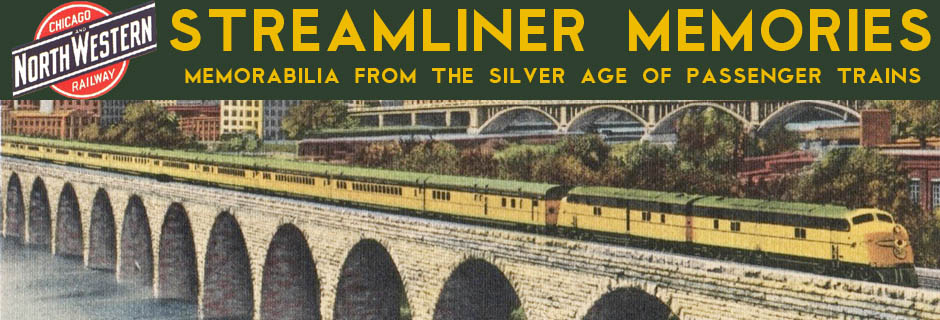
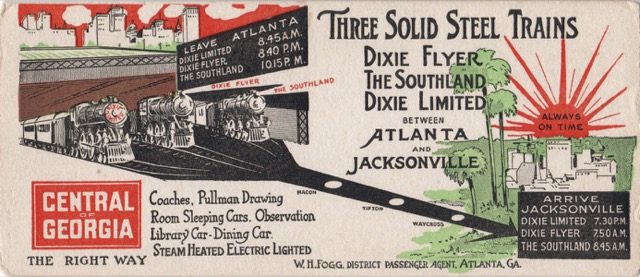
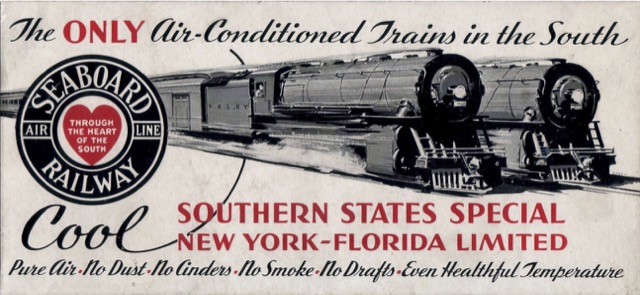
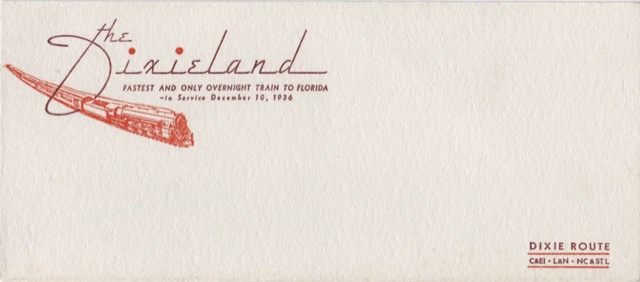
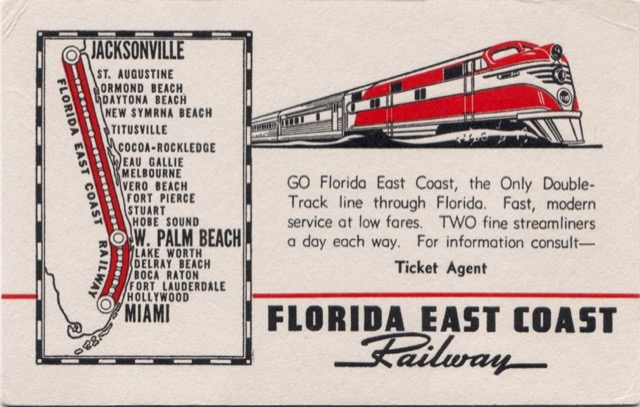
The Railroad Safety Appliance Act requiring air brakes on all class 1 railroads passed in 1893 and was effective in 1900, the same year that the SAL was founded. Since all railroads had air brakes by 1900, I doubt that the name came about due to air brakes. There were many “air line” railroad names in the days before the airplane. They all were meant to infer that that line was the shortest distance between two terminals. The idea was that the tracks closely followed the straight line distance, in this case, Richmond to Tampa and (later) Miami. The use of the “Florida-West India Short Line” slogan early in the SAL history is another indication that the SAL name was chosen to represent the shortest route. It was, of course, not really an “air line” on the map, but it was actually the shortest rail route to Tampa from Virginia.
Jim